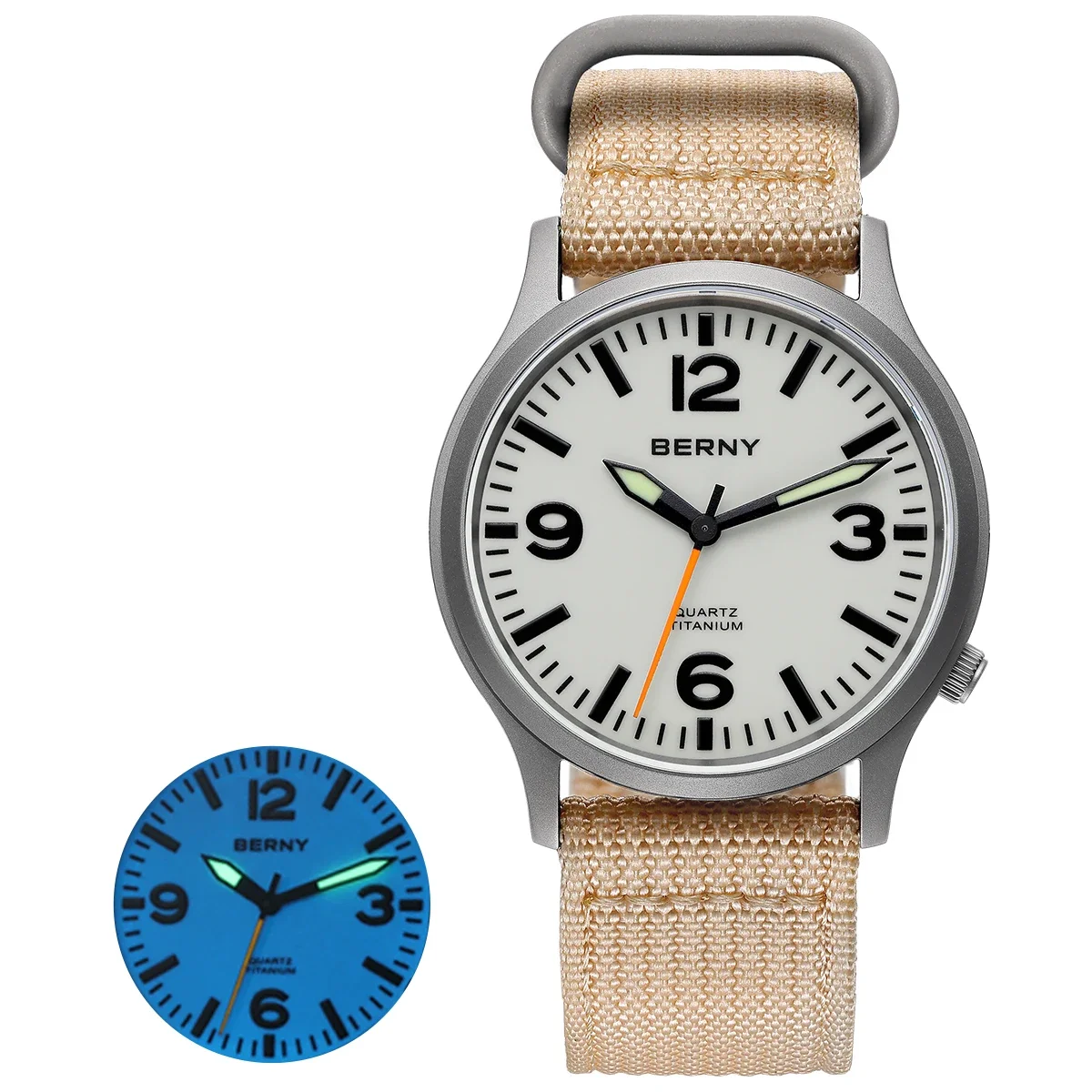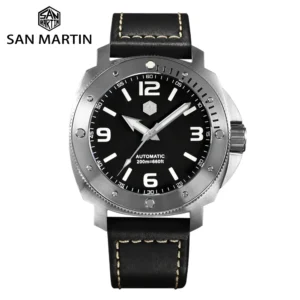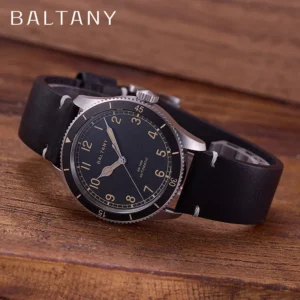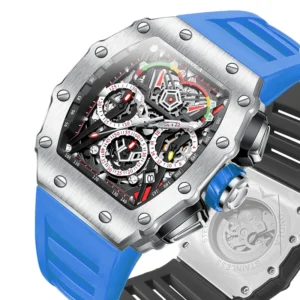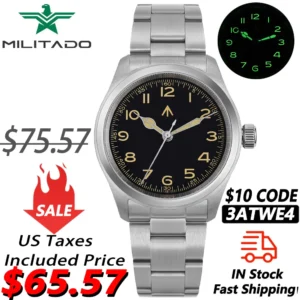Introduction: Why Titanium Watches Are Worth Considering
In the world of fine timepieces, titanium has emerged as a premium case material that’s capturing the attention of discerning watch enthusiasts everywhere. This remarkable metal offers a distinctive combination of properties that make it increasingly popular among watchmakers and collectors alike.
Titanium stands out primarily for three exceptional characteristics:
– It’s incredibly lightweight (approximately 45% lighter than stainless steel)
– It offers impressive strength despite its light weight
– It provides outstanding resistance to corrosion
The metal’s rise to prominence in watchmaking represents a perfect marriage of advanced materials science and traditional horological craftsmanship. Titanium watches first gained recognition through pioneering designs that demonstrated how this aerospace material could be adapted for wristwear, creating timepieces that were both technically advanced and comfortable for daily use.
This guide aims to help you make an informed decision about titanium watches by exploring their properties, advantages, different grades, comparisons with other materials, and proper care techniques. Whether you’re considering your first titanium timepiece or looking to expand your collection, understanding the history of dive watch engineering and exploring titanium automatic watches will provide valuable context for your decision.
The Science Behind Titanium: Properties That Matter for Watches
Density and Weight
Titanium has a density of approximately 4.5 g/cm³, making it significantly lighter than stainless steel at 7.9 g/cm³. This translates to a watch that’s nearly half the weight of its steel counterpart with identical dimensions. For a standard 42mm watch case, this weight difference is immediately noticeable on the wrist.
Strength-to-Weight Ratio
Despite being lighter, titanium boasts a strength-to-weight ratio that far exceeds stainless steel. This means titanium can maintain structural integrity while using less material, allowing watchmakers to create robust timepieces that don’t compromise on durability.
Corrosion Resistance
Titanium naturally forms a stable oxide layer on its surface when exposed to oxygen. This invisible shield provides exceptional protection against corrosion from saltwater, sweat, and most chemicals. Unlike steel which can pit or rust over time, titanium maintains its integrity even in harsh environments.
Hypoallergenic Properties
For those with sensitive skin or metal allergies, titanium offers significant advantages. The material is biocompatible and doesn’t contain nickel, which is the primary allergen in many stainless steel alloys.
Thermal Conductivity
Titanium has lower thermal conductivity than stainless steel, meaning it doesn’t transfer heat or cold as readily. This translates to a watch that won’t feel as cold against the skin in winter or heat up as quickly in summer.
Non-Magnetic Characteristics
Titanium is non-magnetic, which protects watch movements from magnetic interference that can affect accuracy. This property is increasingly valuable in our world filled with electronic devices.
Understanding the titanium vs stainless steel case durability comparison is essential for appreciating how these scientific properties translate to real-world watch performance.
The Advantages of Choosing a Titanium Watch
Exceptional Comfort Through Lightweight Design
The most immediately noticeable benefit of a titanium watch is its remarkable lightness on the wrist. This makes titanium watches ideal for all-day wear, especially with larger case sizes that would be cumbersome in heavier materials. Many wearers report “forgetting” they’re wearing a watch at all—a testament to titanium’s comfort.
Superior Durability Despite Light Weight
Titanium’s high strength-to-weight ratio means it can withstand significant impacts and pressure without deformation. This durability makes titanium watches particularly suitable for active lifestyles and adventurous pursuits where timepieces might face challenging conditions.
Outstanding Corrosion Resistance
For watches that encounter saltwater, sweat, or chemicals regularly, titanium’s natural corrosion resistance is invaluable. This makes titanium an excellent choice for dive watches and sports watches that must maintain their integrity in harsh environments. The metal will not pit, stain, or deteriorate even after years of exposure to corrosive elements.
Hypoallergenic Benefits
Titanium watches offer a solution for watch enthusiasts with sensitive skin or metal allergies. The hypoallergenic nature of titanium means it can be worn comfortably by virtually anyone without fear of skin irritation or allergic reactions.
Unique Aesthetic Appeal
Titanium possesses a distinctive matte gray appearance that many enthusiasts find attractive. Its subtle, sophisticated finish often has a slightly darker tone than stainless steel, providing a more understated look. The material can also take on various finishes from brushed to bead-blasted for different aesthetic effects.
Understanding why titanium is used in watches and exploring rugged automatic watches can provide additional context for these benefits.
Potential Drawbacks: What to Consider Before Buying
Surface Scratch Susceptibility
While titanium is extremely hard and durable in terms of structural integrity, its surface can be more prone to scratches than some other watch materials. This creates an important distinction between hardness (resistance to deformation) and scratch resistance (resistance to surface markings). Titanium typically has a Mohs hardness of 6, compared to stainless steel’s 5.5-6.5, but its surface oxide layer can show marks more readily.
These scratches are typically superficial and don’t compromise the watch’s integrity, but they can affect the appearance over time. Many titanium watch owners consider these marks as character development—a natural patina that tells the story of the watch’s journey.
Cost Factors
Titanium is generally more expensive than stainless steel, both as a raw material and in its manufacturing process. The metal is more difficult to machine, requiring specialized tools and expertise to work with effectively. These production challenges translate to a price premium, with titanium watches typically costing 20-30% more than their stainless steel counterparts.
Limited Finishing Options
The natural properties of titanium limit the range of finishes that can be applied. While steel can be polished to a brilliant mirror shine, titanium typically maintains a more subdued appearance. This can be a disadvantage for those seeking the high-polish glamour associated with traditional luxury watches.
Different Feel and Perception
Some traditional watch enthusiasts accustomed to the substantial heft of steel or precious metal watches may initially perceive titanium as feeling “too light” or “insubstantial.” This psychological association between weight and value can take time to overcome, though many convert to titanium after experiencing its comfort benefits.
A thorough understanding of titanium watches’ pros and cons will help you determine if this material aligns with your preferences and lifestyle.
Understanding Titanium Grades in Watchmaking
Titanium used in watchmaking comes in different grades, each with specific properties that affect the final timepiece’s characteristics and performance.
Grade 2 Titanium (Commercially Pure)
Grade 2 is the most common form of commercially pure titanium used in watches. It offers:
– Excellent corrosion resistance
– Good strength characteristics
– Relatively easier machinability
– A slightly darker gray appearance
– Cost-effectiveness compared to higher grades
Many entry and mid-level titanium watches utilize Grade 2 titanium for its balanced properties and more accessible price point. While durable, it’s somewhat softer than titanium alloys, which affects its scratch resistance.
Grade 5 Titanium (Ti-6Al-4V Alloy)
Grade 5 titanium is an alloy containing 6% aluminum and 4% vanadium, offering:
– Significantly higher strength and hardness
– Better scratch resistance than Grade 2
– Enhanced ability to hold a finish
– Superior fatigue resistance
– Slightly brighter appearance
Premium watch manufacturers often opt for Grade 5 titanium despite its higher cost and more challenging machining requirements. The improved durability and ability to maintain appearance make it ideal for luxury timepieces intended for daily wear.
| Property | Grade 2 Titanium | Grade 5 Titanium |
|---|---|---|
| Composition | Commercially pure (99.2%) | Ti-6Al-4V alloy |
| Tensile Strength | 344 MPa | 950 MPa |
| Hardness | 80 HRB | 36 HRC |
| Scratch Resistance | Moderate | Higher |
| Weight | Very Light | Very Light |
| Cost | Lower | Higher |
| Typical Use | Entry to mid-range watches | Premium luxury watches |
Proprietary Titanium Alloys and Treatments
Several watch manufacturers have developed proprietary titanium materials to address specific challenges:
- Hardened Titanium: Various proprietary processes that increase surface hardness significantly
- Super Titanium: Enhanced titanium with surface hardening techniques that improve scratch resistance
- Beta Titanium: Alloys with modified structures offering improved workability
For deeper insights into how these materials perform in real-world conditions, exploring titanium rugged watches durability can be valuable.
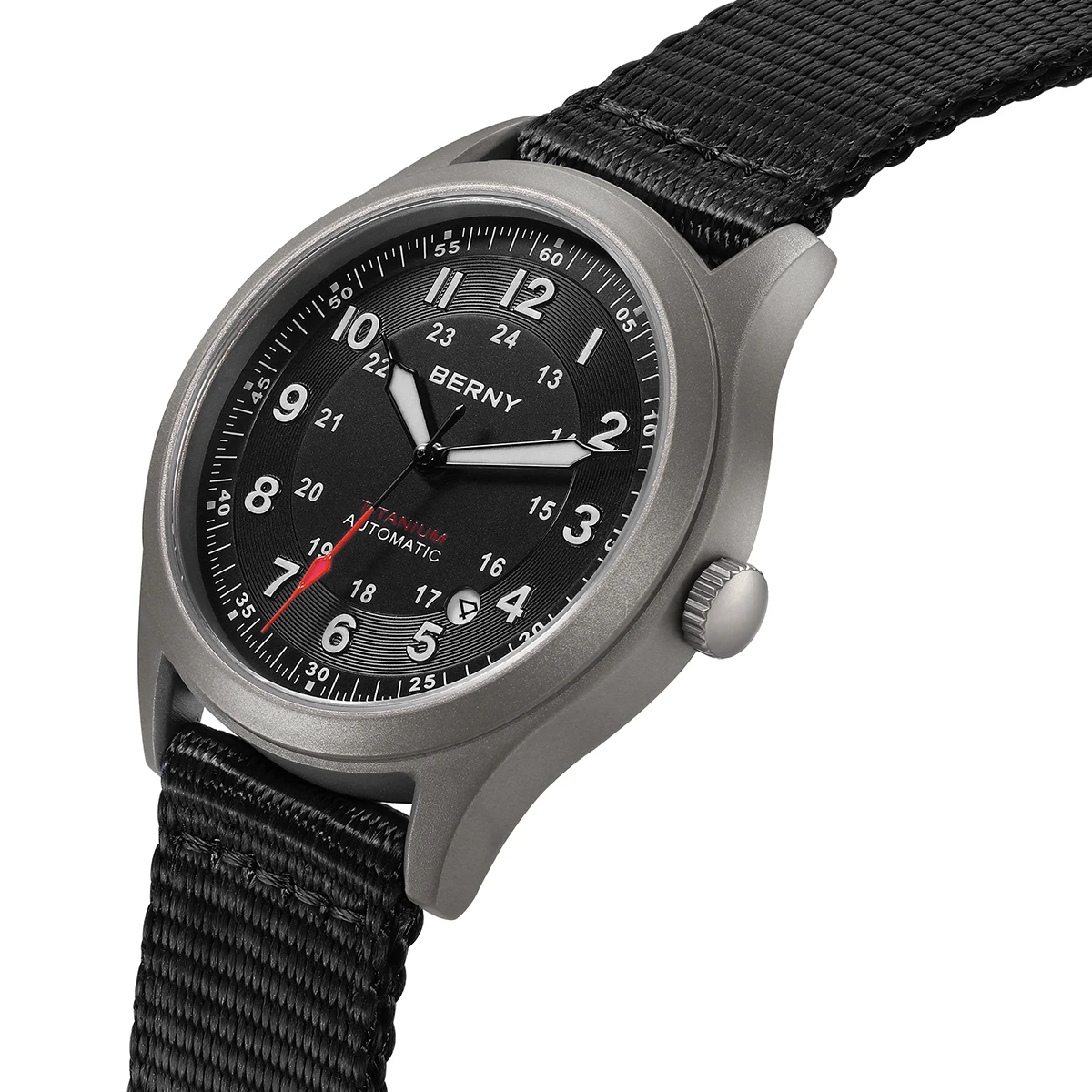
Surface Treatments and Finishes: Enhancing Titanium’s Performance
To address titanium’s natural limitations and enhance its performance as a watch material, manufacturers employ various surface treatments and finishing techniques.
Surface Hardening Treatments
Physical Vapor Deposition (PVD)
This process deposits an ultra-thin layer of hard material onto the titanium surface, increasing scratch resistance while maintaining the base material’s properties. PVD coatings can also add color options, from black to gold tones.
Diamond-Like Carbon (DLC) Coating
DLC creates an extremely hard, smooth surface that significantly improves scratch resistance. These coatings appear black or dark gray and provide a modern, technical aesthetic while protecting the underlying titanium.
Proprietary Hardening Processes
Several watch brands have developed their own hardening technologies that can increase surface hardness by 5-6 times, approaching the hardness of sapphire. These processes alter the surface structure of titanium without adding coating layers.
Finishing Techniques for Titanium
Brushed Finish
This popular finishing technique creates fine, directional lines on the titanium surface. Brushed finishes hide minor scratches effectively and provide a subtle, tool-like appearance that complements titanium’s technical nature.
Bead-Blasted/Matte Finish
This process creates a uniform, non-reflective surface by bombarding titanium with small particles. The resulting matte appearance emphasizes titanium’s industrial character and hides fingerprints well, though it can show wear patterns over time.
Polished Elements
While challenging to achieve on titanium, selective polishing can create contrasting surfaces that highlight design elements. Fully polished titanium never achieves the mirror-like shine of steel but offers a more subdued brilliance that some collectors prefer.
Mixed Finishing
Many sophisticated titanium watch designs incorporate multiple finishing techniques across different case components. This approach creates visual depth and interest while showcasing the material’s versatility.
Exploring automatic field military watches reveals various titanium finishes in practical applications.
Titanium vs. Stainless Steel: The Ultimate Comparison
When deciding between titanium and stainless steel for your next watch, understanding their key differences will help you make the right choice for your needs and preferences.
| Feature | Titanium | Stainless Steel |
|---|---|---|
| Weight | 45% lighter than steel | Substantial, provides “quality” heft |
| Strength | Higher strength-to-weight ratio | Excellent overall strength |
| Scratch Resistance | More prone to surface scratches | Better resistance to minor scratches |
| Corrosion Resistance | Superior (nearly impervious) | Good (especially 316L grade) |
| Hypoallergenic | Yes (naturally nickel-free) | No (contains nickel unless specified) |
| Thermal Conductivity | Low (feels “warmer”) | High (feels “colder”) |
| Cost | Higher (20-30% premium) | More economical |
| Finishing Options | Limited (mostly matte/brushed) | Versatile (high polish possible) |
When Titanium Excels
Titanium proves superior for:
– Active lifestyles where weight matters
– Extended wearing comfort
– Marine environments and water sports
– Wearers with metal sensitivities
– Those who prioritize technical materials
When Steel Might Be Better
Stainless steel might be preferable for:
– Those who associate quality with substantial weight
– Situations where scratch visibility is a concern
– More formal or traditional dress watches
– Budget-conscious buyers
– Watches where high-polish finishes are desired
Understanding the broader context of best materials for outdoor watch cases can help place this comparison in perspective.
Beyond Steel: Comparing Titanium to Other Watch Materials
Titanium vs. Ceramic
Ceramic Advantages:
– Superior scratch resistance (nearly impossible to scratch)
– High-gloss finish that remains pristine
– Modern aesthetic with deep, rich colors
Titanium Advantages:
– More impact-resistant (ceramic can shatter if dropped)
– Significantly lighter weight
– Greater design flexibility
– Easier to repair if damaged
Best Choice When: Choose ceramic for scratch resistance in formal settings; choose titanium for durability in active lifestyles.
Titanium vs. Carbon Fiber/Composites
Carbon Fiber Advantages:
– Even lighter than titanium
– Distinctive patterned appearance
– Potential for higher strength in specific directions
Titanium Advantages:
– More uniform strength in all directions
– Proven long-term durability
– Greater resistance to UV degradation
– More traditional metallic appearance
Best Choice When: Choose carbon fiber for ultra-lightweight sports watches; choose titanium for a balance of lightweight and traditional appeal.
Titanium vs. Bronze
Bronze Advantages:
– Develops unique patina over time
– Warm, vintage aesthetic
– Connection to maritime traditions
Titanium Advantages:
– Doesn’t oxidize or change appearance
– Hypoallergenic (bronze can cause reactions)
– Much lighter weight
– Won’t turn skin green
Best Choice When: Choose bronze for vintage appeal and evolving aesthetics; choose titanium for consistent appearance and comfort.
Titanium vs. Precious Metals
Gold/Platinum Advantages:
– Traditional luxury status
– Warmer, more luxurious appearance
– Investment value
– Exceptional polishing potential
Titanium Advantages:
– Dramatically lighter weight
– Superior durability and practical performance
– More contemporary aesthetic
– Significantly lower price point
Best Choice When: Choose precious metals for formal occasions and investment; choose titanium for daily wear and active use.
Exploring bronze automatic watches provides an interesting contrast to titanium’s characteristics.
The On-Wrist Experience: How Titanium Watches Feel and Wear
The physical experience of wearing a titanium watch differs significantly from other watch materials in ways that specifications alone can’t convey.
The Lightness Factor
First-time titanium watch wearers often describe an uncanny sensation—the visual presence of a substantial timepiece paired with almost imperceptible weight. This disconnect between eyes and wrist can be momentarily disorienting but quickly becomes one of titanium’s most appreciated qualities. A 42mm titanium dive watch might weigh just 85 grams on a bracelet, compared to 150+ grams for its steel equivalent.
Temperature and Skin Contact
Titanium feels noticeably “warmer” against the skin than stainless steel due to its lower thermal conductivity. The material doesn’t conduct body heat away from the skin, nor does it quickly become cold in winter conditions. This creates a more neutral, comfortable experience in varying temperatures.
The Sound of Titanium
Titanium bracelets and clasps produce a different acoustic signature than steel—often described as a softer, more muted sound. The clasps typically close with a gentler click, and the bracelet links have a less metallic sound when moving.
Perception Changes Over Time
Many watch enthusiasts who initially equate substantial weight with quality report a significant perspective shift after wearing titanium daily. The comfort benefits become increasingly apparent, particularly during active use or all-day wear. What might initially feel “too light to be luxury” often transforms into an appreciation for thoughtful engineering and material science.
The evolution of dive watch technology demonstrates how titanium has been embraced for its practical benefits rather than just its technical specifications.
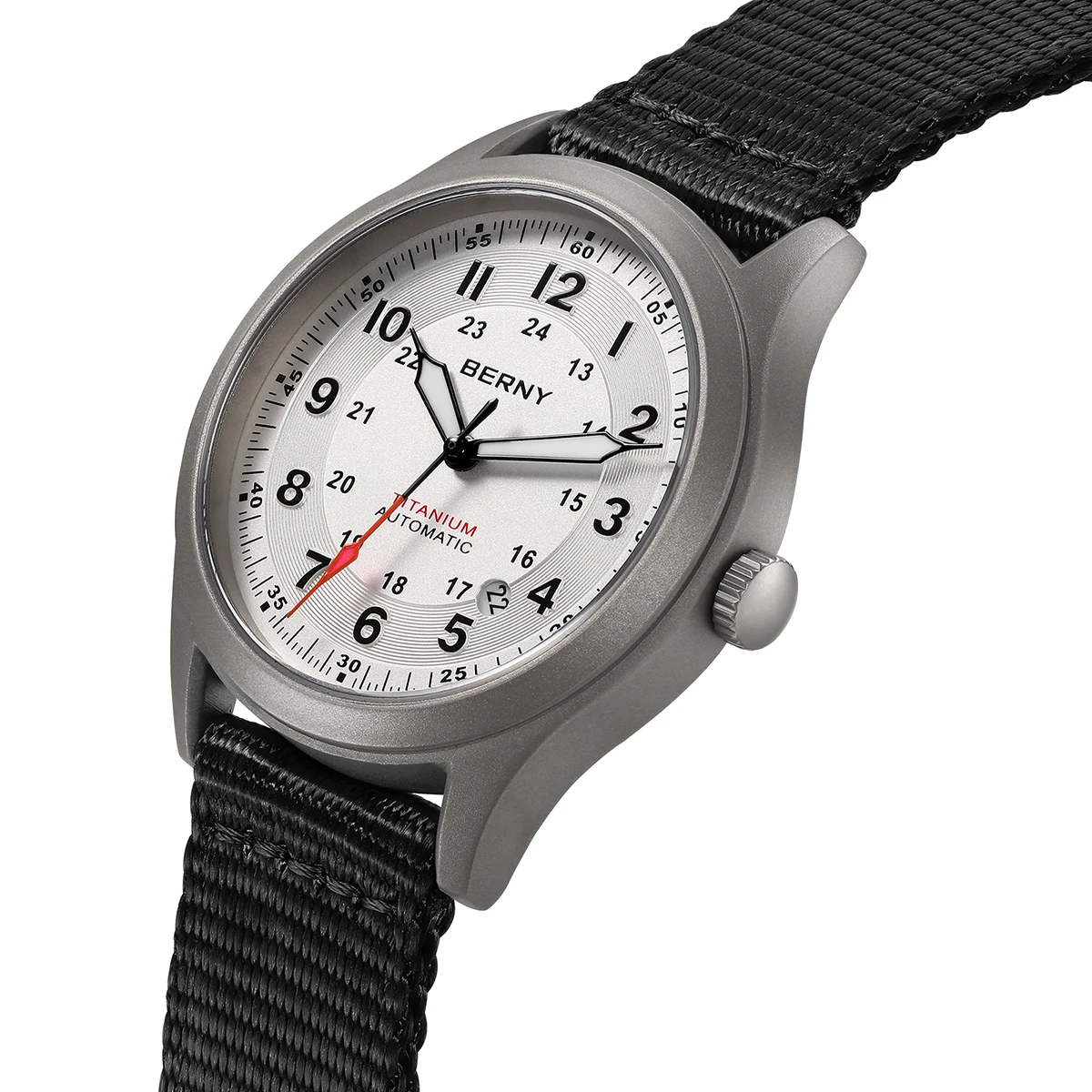
Caring for Your Titanium Timepiece: Maintenance Best Practices
Proper maintenance will keep your titanium watch looking and performing its best for years to come. While titanium is durable, it benefits from appropriate care.
Regular Cleaning Procedure
- Prepare a small bowl with warm water and mild soap (dishwashing liquid works well)
- Remove the watch from its bracelet/strap if possible
- Gently scrub with a soft toothbrush, paying special attention to crevices
- Rinse thoroughly with clean water
- Dry completely with a soft microfiber cloth
- For bracelets, clean between links where sweat and dirt accumulate
Managing Minor Scratches
Unlike steel watches that can be easily polished, titanium requires specific approaches to scratch management:
- For brushed finishes: Light surface marks can sometimes be addressed using a gray Scotch-Brite pad, following the direction of the existing brush lines
- For bead-blasted finishes: Unfortunately, these are difficult to touch up at home and may require professional refinishing
- For DLC or hardened titanium: These surfaces should be left alone as attempts to remove scratches will damage the protective coating
What to Avoid
- Abrasive cleaners or cloths that can scratch the surface
- Ultrasonic cleaners unless approved by the manufacturer
- Chemical solvents including acetone and alcohol-based cleaners
- Polishing compounds designed for steel (they won’t work effectively on titanium)
When to Seek Professional Help
Consider professional servicing when:
– Deep scratches affect your enjoyment of the watch
– The finish has worn unevenly over time
– Water resistance may be compromised
– Movement service is due (typically every 5-7 years)
For more context on maintenance requirements across different case materials, the ultimate guide to tough watch cases provides valuable perspective.
Is a Titanium Watch Right for You? Decision-Making Framework
Determining whether titanium is the right material for your next watch purchase depends on several personal factors. Consider these questions to guide your decision:
What’s Your Activity Level?
High activity (sports, outdoor pursuits): Titanium’s lightweight, corrosion resistance, and durability make it ideal.
Primarily desk or formal settings: Weight may be less critical; other materials might better suit your aesthetic preferences.
How Important is Comfort for Extended Wear?
Wear watch 12+ hours daily: Titanium’s lightness provides significant comfort benefits.
Occasional wear for limited periods: Weight considerations become less important.
What’s Your Sensitivity to Watch Weight?
Prefer lightweight watches: Titanium will feel liberating.
Enjoy substantial, weighty watches: You might find titanium feels “too light” initially.
Do You Have Skin Sensitivities?
Experience irritation with some metals: Titanium’s hypoallergenic properties are a clear advantage.
No skin reactions to watches: Material choice can focus on other factors.
What’s Your Concern About Scratches?
Accept watches develop character over time: Titanium’s potential for surface marks won’t bother you.
Prefer watches that remain pristine: Consider hardened titanium or alternative materials.
What’s Your Budget Range?
Flexible budget: Titanium’s premium is easily justified by its benefits.
More constrained budget: The titanium premium might be significant relative to comparable steel models.
Military Inspired Automatic Watches, Rugged Automatic Watches, Tactical Automatic Watches
Price range: $852.14 through $994.60 Select options This product has multiple variants. The options may be chosen on the product pageBronze Automatic Watches, Military Inspired Automatic Watches, Professional Spec Dive Watches
Price range: $1,442.21 through $1,442.82 Select options This product has multiple variants. The options may be chosen on the product pageProfessional Spec Dive Watches, Titanium Automatic Watches
$574.74 Select options This product has multiple variants. The options may be chosen on the product pageClassic Pilot Watches, Military Inspired Automatic Watches
$561.00 Select options This product has multiple variants. The options may be chosen on the product pageRugged Automatic Watches, Unique Automatic Watches
Price range: $228.96 through $231.10 Select options This product has multiple variants. The options may be chosen on the product pageClassic Field Watches, Military Inspired Automatic Watches
Price range: $280.87 through $338.51 Select options This product has multiple variants. The options may be chosen on the product page
For active individuals who value comfort, have concerns about weight or skin sensitivity, and don’t mind some potential surface wear, titanium represents an excellent choice. Exploring tactical automatic watches can show how titanium enhances performance in practical applications.
Frequently Asked Questions About Titanium Watches
Do titanium watches scratch easily?
Titanium is susceptible to surface scratches, though these are typically superficial. While titanium has excellent structural hardness, its surface can show marks more readily than stainless steel. Many manufacturers address this through hardening treatments or coatings that significantly improve scratch resistance.
Can titanium watches be refinished or polished?
Yes, but with limitations. Unlike stainless steel, titanium requires specialized techniques for refinishing. Brushed finishes can often be refreshed by skilled watchmakers, while bead-blasted finishes are more challenging to restore. Many titanium watch owners embrace the gradually developing patina as part of the watch’s character.
Will titanium watches set off metal detectors?
Titanium is non-magnetic and generally won’t trigger standard metal detectors when worn. However, the watch’s other components (steel movement parts, etc.) might still create a response. For most everyday security checkpoints, a titanium watch is less likely to cause issues than a stainless steel one.
Do titanium watches fade or change color over time?
Unlike bronze or copper, titanium doesn’t develop a patina or change color with age. The oxide layer that forms on titanium is microscopic and transparent, protecting the metal while maintaining its appearance. With proper care, a titanium watch will retain its original color indefinitely.
Are titanium watches more expensive to service?
Basic movement servicing costs the same regardless of case material. However, case refinishing or repair for titanium watches can be more expensive due to the specialized equipment and expertise required. Not all watch service centers have the capability to properly refinish titanium.
Can titanium bracelets be easily sized?
Sizing titanium bracelets requires proper tools as the material is harder than steel and can damage standard watch tools. While the process is similar to steel bracelets, it’s best performed by professionals with experience working with titanium to avoid damaging the links or screws.
The history of professional diving watches shows how titanium has been tested in some of the most demanding conditions, informing many of these practical considerations.
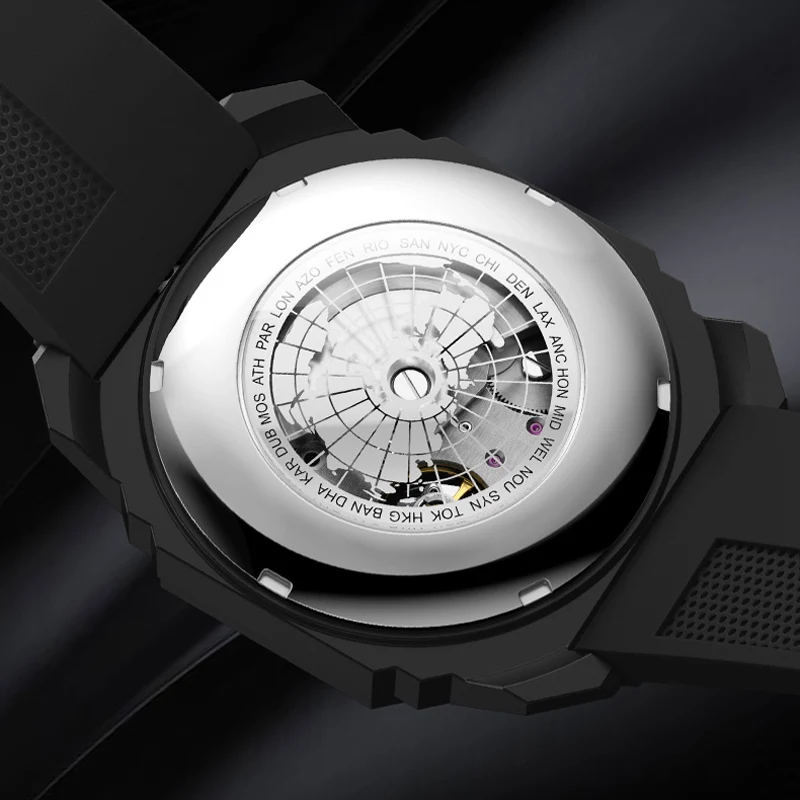
Conclusion: Making Your Titanium Watch Decision
Titanium represents a compelling choice for watch enthusiasts seeking the perfect balance of comfort, durability, and modern aesthetics. Its exceptional lightweight properties, corrosion resistance, and hypoallergenic nature make it particularly well-suited for active lifestyles and those with skin sensitivities.
When weighing the titanium option, remember to consider:
- The significant comfort benefits of titanium’s lightweight nature
- Your tolerance for potential surface scratches versus structural durability
- The distinctive aesthetic that titanium brings to a timepiece
- Whether the price premium aligns with the value you place on these characteristics
While titanium watches may require some adjustment from those accustomed to heavier materials, many enthusiasts find that once they experience the comfort of titanium, it’s difficult to return to traditional steel timepieces. The material’s combination of practical benefits makes it especially suitable for watches intended for frequent or active wear.
Ultimately, the “right” watch material is highly personal—balancing practical considerations with aesthetic preferences and wearing habits. Titanium’s growing popularity in fine watchmaking reflects its unique ability to satisfy both the practical demands of daily wear and the technical sophistication that watch enthusiasts appreciate.

